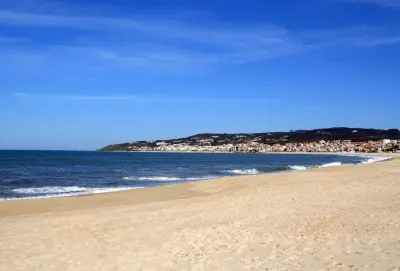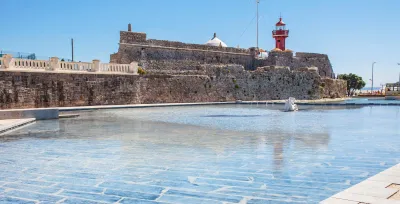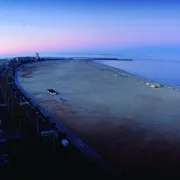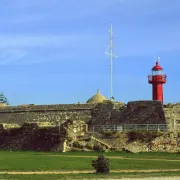
Its nickname, Rainha das Praias (Queen of Beaches) leaves us in no doubt as to the main attraction at Figueira da Foz. True to form, the summer months see its long stretches of golden sands attract swarms of beach lovers who come to swim, surf or simply soak up the rays of Figueira’s apparently above average amount of sunshine.
The name Figueira da Foz itself, which translates as ‘fig tree at the mouth of the river’ and has inspired many a local legend, informs us of the town’s location where the River Mondego spills into the sea. One legend tells us that the fig tree in question was one that stood at the water’s edge and to which fishermen of old would tether their boats. The picturesque quality of this setting is further enhanced by the surrounding green hills of the Serra da Boa Viagem, from where commanding views of the scenery abound.
Despite today’s tanned crowds, the height of Figueira’s popularity as a resort was perhaps in the mid-war period of last century, however one of its most prominent and important features dates from well before that. The Grande Casino Peninsular, one of the largest in the country, was built in the late 19th century and still hosts gambling, shows and dancing. It also owns a ‘palace’ in the town, which was reputedly lost by its important owners to the casino because of a hefty gambling debt. The Palácio Sotto Mayor is a treasure-trove of art, antiques and collectables showing how the other half lived not so long ago and can be visited for a small fee.

However, this seaside town is no one trick pony and the contents of the Casa do Paço, which overlooks the river, is a case in point. It houses a world-ranking collection of thousands of 17th century tiles from the famous Dutch ceramics-producing town of Delft, which were the bounty of a nearby shipwreck from that period, and is free to visit. Also of historical interest is the fact the Duke of Wellington landed here with his men in 1808 to commence the Peninsular war against the French. He stayed in the triangular-shaped Santa Catarina fortress to the north of the town, which dates from the 1500s.
Regular bullfights take place at the height of the summer in the traditional bullring and for those with the energy in the summer sun, windsurfing is popular here too. Nearby, the ancient castle on the hillside of Montemor-o-Velho makes a visit to this sweet little town worthwhile. In addition to this, Buarcos is a small, unspoilt fishing village just to the north of Figueira da Foz for those desiring something calm and a little less of


